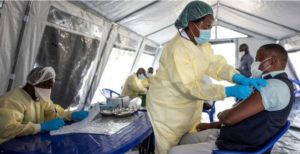Wellness economy – a multi-trillion-dollar market

Global Wellness Institute (GWI )defines the wellness economy as industries that enable consumers to incorporate wellness activities and lifestyles into their daily lives. It encompasses 11 varied and diverse sectors.
Wellness is estimated by the Global Wellness Institute to be a multi-trillion-dollar market, with global spending exceeding $4 trillion every year since 2017. Its growth rate has consistently outpaced global GDP growth, with positive gains even in years of global economic downturn (except during the 2020 pandemic year).
Within a relatively short span of time, wellness has emerged globally as a dominant lifestyle value, driving consumer interest in exercise, healthy eating, self-care, mindfulness, stress reduction, healthy aging, complementary medicine, holistic health and other wellness practices.
For an expanding set of consumers, wellness has become an important value system used to filter daily life and decision-making with a growing focus on issues such as food quality and the way food is prepared and consumed, mitigating stress and boosting mental wellness, incorporating movement into daily activities, environmental consciousness, the yearning for connection, the desire for self-actualization, and a search for happiness. There is no sign that this trend is slowing down.
GWI first pioneered this concept and measured the wellness economy in the 2014 Global Wellness Economy Monitor. GWI has conducted original research to define and quantify seven sectors within the wellness economy (wellness real estate, workplace wellness, physical activity, mental wellness, wellness tourism, spas and thermal/mineral springs). For the other sectors, GWI draws upon secondary sources to produce a global aggregate figure.
Wellness Economy Definitions:
The Global Wellness Institute defines the wellness economy as industries that enable consumers to incorporate wellness activities and lifestyles into their daily lives. The wellness economy encompasses 11 sectors, and we use the definitions below for the purposes of measuring each sector.
Mental wellness: Consumer spending on activities, products and services whose primary aim is to help us along the mental wellness pathways of growth and nourishment and rest and rejuvenation. It encompasses four subsectors: self-improvement; brain-boosting nutraceutical and botanicals; meditation and mindfulness; and senses, spaces and sleep.
Physical activity: Consumer spending associated with intentional physical activities performed during leisure and recreation, including three recreational activity subsectors (sports and active recreation, fitness and mindful movement) and three enabling subsectors (technology, equipment and supplies, and clothing and apparel).
Wellness real estate:Expenditures on the construction of residential and commercial/institutional (office, hospitality, mixed-use/multifamily, medical, leisure, etc.) properties that incorporate intentional wellness elements in their design, materials and building as well as their amenities, services and/or programming. Note that wellness real estate is broader than (but encompasses) wellness lifestyle real estate, which focuses on the residential component.
Workplace wellness:Includes expenditures on programs, services, activities and equipment by employers aimed at improving their employees’ health and wellness. These expenditures aim to raise awareness, provide education, and offer incentives that address specific health risk factors and behaviors (e.g., lack of exercise, poor eating habits, stress, obesity, smoking) and encourage employees to adopt healthier lifestyles.
Wellness tourism:The aggregation of all expenditures made by wellness tourists—primary and secondary, international and domestic—including spending on lodging, food and beverage, activities and excursions, shopping and in-country transportation.
Spa economy:Includes the revenues of spa facilities and the related cluster of sectors that support and enable spa businesses. The spa economy includes spa facilities, spa education (for therapists and managers/directors, both initial training and continuing education), spa consulting, spa capital investments, spa associations, and spa-related media and events.
Thermal/mineral springs:Encompasses the revenues of business establishments associated with the wellness, recreational and therapeutic uses of water with special properties, including thermal water, mineral water and seawater.
Healthy eating, nutrition and weight loss:Includes consumer expenditures on vitamins and supplements, fortified/functional foods and nutraceuticals, natural and organic foods, health foods, sports nutrition, nutrition and dietary services, and weight loss/management products and services.
Personal care and beauty: Includes consumer expenditures on beauty and salon services (excluding spas); skin, hair and nail care services and products; cosmetics, toiletries and other personal care products; dermatology; and prescription pharmaceuticals for skin care. Also includes products and services that specifically address age-related health and appearance issues, such as cosmetics/cosmeceuticals for skin/face/body care, hair care/growth, and pharmaceuticals/supplements that treat age-related health conditions.
Preventive and personalized medicine and public health: Includes expenditures on medical services that focus on treating “well” people, preventing disease, or detecting risk factors—for example, routine physical exams, diagnostic and screening tests, genetic testing, etc. Personalized health uses sophisticated information and data for individual patients (including genetic, molecular and environmental screening, analysis and diagnostics; personalized disease management services; and health IT such as electronic health records, telemedicine and remote patient monitoring) to provide tailored approaches for preventing disease, diagnosing and managing risk factors, or managing and treating conditions.
Traditional and complementary medicine: Encompasses expenditures on diverse medical, healthcare, holistic, and mentally or spiritually-based systems, services and products that are not generally considered to be part of conventional medicine or the dominant health care system—including homeopathic, naturopathic, chiropractic, Traditional Chinese Medicine, Ayurveda, energy healing, traditional/herbal remedies and supplements, etc. The nomenclature for this sector is evolving alongside growing consumer adoption of traditional/indigenous, complementary, alternative and integrative medical practices outside of the conventional/Western medical system. Source : Globalwellnessinstitute.org
24 August 2023
















